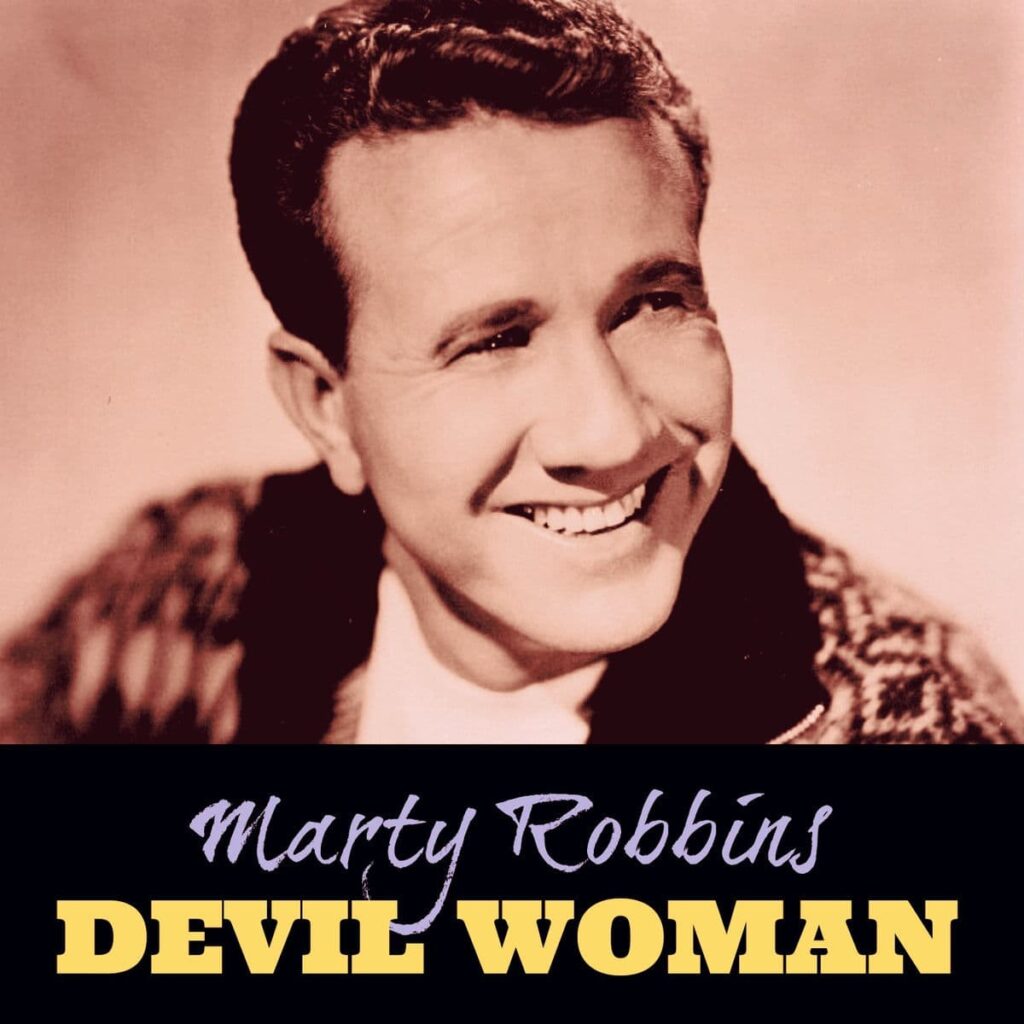
The Bewitching Ballad of a Dangerous Love
Ah, the 1960s. A time when the airwaves were filled with stories spun into song, tales of love, loss, and sometimes, a darkness that crept into the heart. And few artists painted these sonic landscapes with as much vivid detail and emotional resonance as the legendary Marty Robbins. Tonight, we cast our minds back to 1962, a year that saw Marty Robbins release a track that would weave its way into the fabric of country music history: “Devil Woman.” This wasn’t just another song; it was a phenomenon, soaring to the coveted number 1 spot on the Billboard Hot Country Singles chart, holding its dominion for an impressive eight weeks. It also crossed over, making a respectable showing on the Billboard Hot 100, peaking at number 16. Such was the widespread appeal of Robbins‘ unique blend of storytelling and melodic mastery.
“Devil Woman” is, at its core, a cautionary tale, a narrative of a man ensnared by a seductive yet destructive love. It’s a theme as old as time itself, but in Robbins’ hands, it felt fresh, urgent, and deeply personal. The lyrics, penned by Marty Robbins himself, paint a vivid picture of a woman whose beauty masks a sinister influence, a “devil woman” who promises ecstasy but delivers only heartache and despair. Remember those days when a song could truly transport you, when every word felt like a chapter in a short story? That’s the magic of “Devil Woman.” You could almost feel the protagonist’s struggle, torn between the allure of this dangerous siren and the creeping realization of her true nature.
The genius of “Devil Woman” lies not just in its compelling narrative but also in its deceptively simple musical arrangement. The track is a masterclass in understated elegance, allowing Robbins‘ rich, resonant baritone to take center stage. The instrumentation – a classic country blend of guitar, bass, and drums, with a touch of the characteristic “Nashville sound” – provides a subtle yet powerful backdrop, never overpowering the emotional weight of the lyrics. It’s the kind of song that would play on the console radio, perhaps on a late-night drive, its melody echoing the solitude of the open road and the complicated emotions within. For many of us, it conjures images of simpler times, of evenings spent listening to the radio, letting the music wash over us and transport us to different worlds.
Beyond its chart success and musicality, “Devil Woman” resonated so deeply because it touched upon universal human experiences: the intoxicating power of infatuation, the pain of betrayal, and the struggle to break free from a toxic relationship. It speaks to that raw vulnerability we all feel when we fall for someone, sometimes ignoring the warning signs, drawn in by an undeniable magnetism. This song wasn’t just about a “devil woman” in a literal sense; it was about the dark side of love, the shadows that can creep into even the most ardent affections. It served as a lyrical mirror, reflecting the difficult lessons learned in matters of the heart.
And so, as we revisit “Devil Woman,” we’re not just listening to a classic country hit; we’re reliving a piece of our own pasts. We’re remembering the way music used to feel, the way it could tell a story, evoke a mood, and stir the very depths of our souls. Marty Robbins, a true troubadour of the human condition, left us with a timeless masterpiece in “Devil Woman,” a song that continues to echo in our memories, reminding us of the enduring power of a well-told tale set to an unforgettable melody. It’s a testament to his artistry that even decades later, this bewitching ballad still holds us in its captivating spell, a nostalgic whisper from an era when songs truly had something profound to say.